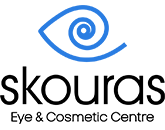Dry Eye Therapy in Toronto
What Is Dry Eye Syndrome?
Dry eye syndrome is a chronic eye disease characterized by the eyes inability to produce quality tears to lubricate the eye or the tears are not properly absorbed. Dry eye syndrome has many symptoms, one of which is tearing. This symptom may be confusing to patients as a symptom of dry eye because one may excessive tearing is contradictory to dryness. However, when the eye is dry it begins to generate an excessive amount of tears to help restore moisture, unfortunately the tears are not an adequate pH quality.
Dry eye syndrome is the most common eye disease effecting 5-6% of the population and up to 6-10% of post-menopausal women. That number increases to 36% in elderly individuals.
What Are the Symptoms of Dry Eye Syndrome?
Typical signs and symptoms of dry eye include:
- dryness
- burning
- itching
- gritty or foreign body sensation
- redness
- excessive tearing
- tired eyes or straining
- fluctuation in vision
- pain
- feeling of pressure in the eye
How is Dry Eye Diagnosed?
Determining whether you suffer from dry eye syndrome and determining the severity of the condition can be measured a number of ways. A comprehensive examination of your overall health and examination of the cornea is generally the first step to determining if a patient suffers from dry eye syndrome. Once diagnosed, there are several treatment options considered depending on the severity of the condition.
TearLab Osmolarity System
The TearLab Osmolarity System is the first objective and quantitative test for diagnosing and treating patients with dry eye syndrome. This system provides fast and accurate results that only requires a small amount of tear film to diagnose dry eyes. Tearlab then generates an osmolarity number using a scale from normal, mild, moderate, to severe ,that gives accurate interpretation to the level of severity of your dry eye condition.
The osmolarity number provides Dr. Skouras with the best options for treatment, often eliminating the redundant preliminary diagnostic therapy associated with dry eye treatment in patients with severe dry eyes, and allowing treatment with more aggressive treatment options sooner. This allows Dr. Skouras to intervene early in the disease process and provide customized treatment options for individual care.
Once Dr. Skouras has evaluated your osmolarity number and provided you treatment options, a follow-up visit will be provided. Upon this visit, your tear osmolarity will be measured again providing Dr. Skouras with accurate results on your response to that treatment.
Schirmer’s Test
Additionally, A Schirmer’s test measures basic tear function. This test involves inserting paper test strips under the lower eyelids for a short duration of time. Once the paper is removed, the tear secretion on the paper is measured and can provide information on the severity of dye eye.




